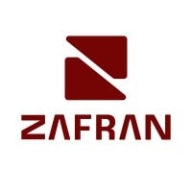


Microsoft Defender for Cloud and DefectDojo compete in security management, with Microsoft Defender for Cloud having an upper hand due to its comprehensive threat protection and integration with Azure services, while DefectDojo is strong in vulnerability management and tracking.
Features: Microsoft Defender for Cloud provides real-time threat detection, threat intelligence integration, and seamless Azure service compatibility. DefectDojo offers detailed security control tracking, integration with security analysis tools, and specialized vulnerability management capabilities.
Ease of Deployment and Customer Service: Microsoft Defender for Cloud ensures hassle-free integration with Azure, supported by robust customer service channels, facilitating effective deployment and troubleshooting. DefectDojo requires more technical expertise for self-managed deployment and lacks comprehensive customer support options.
Pricing and ROI: Microsoft Defender for Cloud has competitive pricing that scales with usage, enhancing ROI by improving security across Azure environments. DefectDojo, being open-source, lowers initial setup costs but may require additional technical resources, leading to potentially higher costs over time due to maintenance.
| Product | Market Share (%) |
|---|---|
| Microsoft Defender for Cloud | 4.8% |
| Zafran Security | 1.1% |
| DefectDojo | 0.9% |
| Other | 93.2% |


| Company Size | Count |
|---|---|
| Small Business | 26 |
| Midsize Enterprise | 7 |
| Large Enterprise | 45 |
Zafran Security integrates with existing security tools to identify and mitigate vulnerabilities effectively, proving that most critical vulnerabilities are not exploitable, optimizing threat management.
Zafran Security introduces an innovative operating model for managing security threats and vulnerabilities. By leveraging the threat exposure management platform, it pinpoints and prioritizes exploitable vulnerabilities, reducing risk through immediate remediation. This platform enhances your hybrid cloud security by normalizing vulnerability signals and integrating specific IT context data, such as CVE runtime presence and internet asset reachability, into its analysis. No longer reliant on patch windows, Zafran Security allows you to manage risks actively.
What are the key features of Zafran Security?
What benefits can users expect from Zafran Security?
In industries where security is paramount, such as finance and healthcare, Zafran Security provides invaluable protection by ensuring that only exploitable vulnerabilities are addressed. It allows entities to maintain robust security measures while allocating resources efficiently, fitting seamlessly into existing security strategies.
DefectDojo is an open-source application vulnerability management tool designed for organizations aiming to enhance their security posture with a streamlined workflow for managing security findings.
DefectDojo supports security teams by facilitating the tracking, managing, and mitigation of vulnerabilities. It centralizes security findings, integrates with different tools, and automates security metrics reporting. Its automation capabilities reduce manual effort, making it indispensable for teams handling large volumes of vulnerabilities. While highly functional, some user feedback suggests there’s room for improvement in documentation and user interface.
What are DefectDojo's most important features?DefectDojo is commonly adopted in industries prioritizing cybersecurity, such as finance, healthcare, and technology, where it is utilized to manage ongoing security assessments and track external threats. Its ability to integrate with specialized tools makes it suitable for environments requiring robust security measures.
Microsoft Defender for Cloud is a comprehensive security solution that provides advanced threat protection for cloud workloads. It offers real-time visibility into the security posture of cloud environments, enabling organizations to quickly identify and respond to potential threats. With its advanced machine learning capabilities, Microsoft Defender for Cloud can detect and block sophisticated attacks, including zero-day exploits and fileless malware.
The solution also provides automated remediation capabilities, allowing security teams to quickly and easily respond to security incidents. With Microsoft Defender for Cloud, organizations can ensure the security and compliance of their cloud workloads, while reducing the burden on their security teams.
We monitor all Vulnerability Management reviews to prevent fraudulent reviews and keep review quality high. We do not post reviews by company employees or direct competitors. We validate each review for authenticity via cross-reference with LinkedIn, and personal follow-up with the reviewer when necessary.